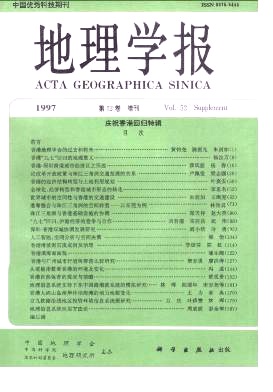Zhang Xinsheng, He Jianbang
Urban is a synthetical body in which there are highly dense social and economic activities. Urban sustainable development has special connotations: ① Spatial Connotation——urban spatial structure plays an important role in regulating the key variables of sustainable environment of urban. ② Temporal Connotation——this emphasizes that the evolution mechanism of urban spatial structure is one of the important contents of sustainable development research. ③ Restriction Connotation——urban system will be restricted by its surroundings, that is, within the limits of services which urban ecological store supplies for urban ecological system,the optimal spatio temporal pattern of urban social, economic and ecological elements can make full use of the resources of urban ecological stock. ④ Region Connotation——urban and its hinterlands are interrelated and interacted on each other,urban sustainable development emphasizes that urban and its hinterland must co exist and develop harmoniously. Urban is a very complex system, it is impossible to distinguish the relation of spatial or non spatial interaction and inter feedback among all urban subsystems, let alone building mathmatical models to describe and optimize them. Thus, we must try to dissect the main structures of spatial interaction and interfeedback, and simulate the dynamic mechanism of evolution of urban spatial structures, so as to provide a strong support for working out the optimal alternative of regulating and controlling urban spatial structures. The paper emphasizes that urban sustainable development is a spatio temporal process of feedback regulation, and the spatio temporal evolution of urban system must be considered, and the spatio temporal dynamic models for urban sustainable should be approached. Urban spatial growth is a special example of the evolution of urban spatial structures. Regulation and control of urban spatial growth must be based on urban spatial dynamic modlling. We consider that the process of urban spatial growth is composed of three sub processes: ① Employee spatial growth driven by urban basic industries. ② Residence housing stock spatial growth dynamics. ③ Service expenditure flows service facility stock spatial growth dynamic. The subprocesses of three multi time scales are interrelated and interacted on each other, and run together to drive urban areas to grow in space and urban spatial structure to evolve. In the paper,on the basis of analysis of configuration of urban spatial dynamics,urban spatial dynamic models are built. These models include intrinsic and exogenous varibles, intrinsic varibles are a bridge among all subsystems, and exogenous varibles are the interface between urban system and its surroundings. Through these interfaces, people can regulate and control urban spatial growth. Under the support of GIS, spatial analysis and spatial visualization, the dynamic modelling system of urban spatial growth and pattern changes is developped. The system may be used to simulate the dynamic process of urban spatial growth caused by different alternatives, and provides strong support for policy evaluation and alternative choices. The system was also numerically tested in Beihai city in Guangxi Automomous
